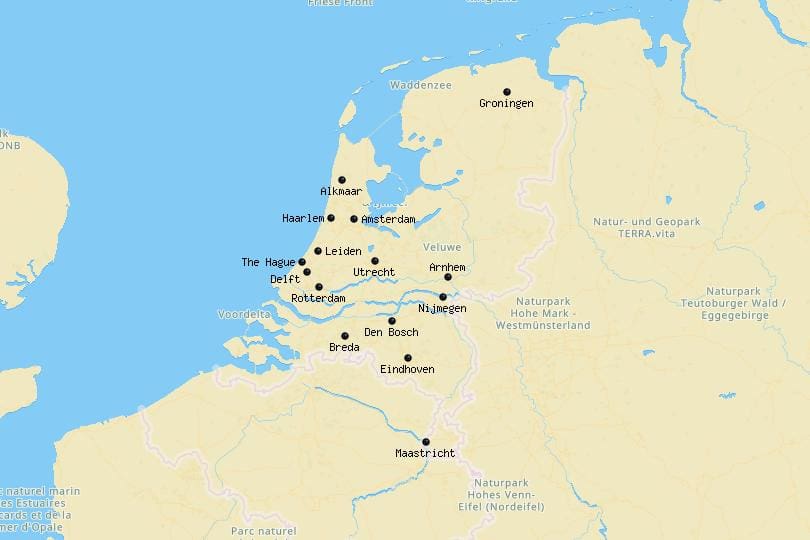Manas National Park is a UNESCO World Heritage Site and a biosphere reserve located in the north-eastern state of Assam in India. It is one of the most beautiful and diverse national parks in the country, known for its stunning natural beauty, rare wildlife, and unique flora and fauna. If you are planning a trip to Assam, visiting Manas National Park should be on your list. In this travel guide, we will provide you with all the information you need to know about the park, including its history, geography, wildlife, and how to plan your trip.
History and Geography of Manas National Park
Manas National Park was established in 1990 and was declared a UNESCO World Heritage Site in 1985. The park covers an area of 950 sq km and is located in the foothills of the Himalayas, on the border of India and Bhutan. The park is situated in the western part of Assam, about 137 km away from Guwahati, the state capital.
The park is named after the Manas River, which flows through it. The park is also home to the rare golden langur, which is found only in this region. The park is also known for its stunning natural beauty, with dense forests, rolling hills, and sparkling rivers.
Flora and Fauna of Manas National Park
Manas National Park is known for its rich biodiversity, with a wide range of animals, birds, and plants. The park is home to more than 60 species of mammals, 300 species of birds, and 900 species of plants.
Animals in Manas National Park
The park is home to several rare and endangered animals, including the Indian rhinoceros, Bengal tiger, clouded leopard, Asian elephant, and the rare golden langur. Other animals found in the park include the gaur, sambar, barking deer, wild pig, and the Himalayan black bear.
Birds in Manas National Park
Manas National Park is a paradise for birdwatchers, with more than 300 species of birds found here. Some of the rare and endangered bird species found in the park include the Bengal florican, great hornbill, black-breasted parrotbill, and the Assam roofed turtle dove.
Plants in Manas National Park
The park is home to a wide variety of flora, with over 900 species of plants found here. The park has several types of forests, including tropical moist deciduous forests, semi-evergreen forests, and grasslands. Some of the trees found in the park include the sal, teak, khair, and simal.
Best Time to Visit Manas National Park
The best time to visit Manas National Park is from November to April when the weather is pleasant and the park is open to visitors. During this time, the temperature is cool, and the humidity is low, making it an ideal time for wildlife spotting and outdoor activities. The park remains closed from May to October due to heavy monsoon rains and flooding, making it difficult to navigate through the park. Therefore, it is advisable to plan your trip accordingly and check the park’s opening and closing dates before visiting.
How to Reach Manas National Park
Manas National Park is well connected by road, air, and rail. The nearest airport is Lokpriya Gopinath Bordoloi International Airport in Guwahati, which is about 137 km away from the park. From the airport, you can hire a taxi or take a bus to reach the park. The nearest railway station is Barpeta Road Railway Station, which is about 41 km away from the park. You can take a taxi or a bus from the railway station to reach the park. The park is also well connected by road, and you can take a bus or hire a taxi from Guwahati or other nearby cities to reach the park.
Where to Stay in Manas National Park
Manas National Park has several accommodation options for visitors, including government-run lodges, private resorts, and forest rest houses. The most popular government-run lodge is the Mathanguri Forest Lodge, which is located inside the park and offers basic amenities like electricity, water, and food. Private resorts like the Bansbari Lodge and the Bhuyanpara Jungle Resort offer more luxurious accommodation options with modern amenities like air conditioning, swimming pools, and spas. Forest rest houses like the Mothanguri Forest Rest House and the Kachugaon Forest Rest House are also available for visitors who prefer a more rustic experience.
Things to Do in Manas National Park
Manas National Park offers several exciting activities for visitors to explore the park’s natural beauty and wildlife.
Safari in Manas National Park
One of the most popular activities in the park is a safari, where you can explore the park’s wildlife on a jeep or an elephant. The park offers both morning and evening safaris, and you can spot animals like the Bengal tiger, Indian rhinoceros, and the golden langur.
Elephant Rides in Manas National Park
Another exciting activity in the park is an elephant ride, where you can explore the park’s dense forests and hills on the back of an elephant. It is a unique experience that allows you to get up close and personal with the park’s wildlife.
Bird Watching in Manas National Park
Manas National Park is a paradise for bird watchers, and you can spot several rare and endangered bird species in the park. The park offers several bird watching trails and bird hides where you can observe birds like the Bengal florican, great hornbill, and the black-breasted parrotbill.
Trekking in Manas National Park
The park offers several trekking trails that allow you to explore the park’s natural beauty and wildlife. The trails vary in difficulty, and you can choose one that suits your level of fitness and experience.
Rafting in Manas National Park
If you are an adventure seeker, you can try rafting in the Manas River that flows through the park. The river offers several rapids, and you can enjoy the thrill of navigating through them while enjoying the park’s stunning natural beauty.
Safety and Precautions in Manas National Park
While visiting Manas National Park, it is essential to follow safety guidelines and take necessary precautions to ensure your safety and the safety of the park’s wildlife. Here are some tips to keep in mind:
Follow Park Rules and Regulations
The park has several rules and regulations that visitors must follow to ensure the park’s conservation and the safety of the park’s wildlife. It is crucial to follow these rules, such as not littering, not feeding the animals, and not disturbing the natural habitat.
Stay with a Guide
It is advisable to explore the park with a guide who has experience navigating the park and spotting wildlife. They can also provide valuable information about the park’s history, flora, and fauna.
Dress Appropriately
The park has a tropical climate, and it is advisable to wear comfortable, lightweight clothes that cover your arms and legs to protect against insect bites and sunburn.
Carry Essential Items
Carry essential items like sunscreen, insect repellent, a hat, a water bottle, and a camera to capture the park’s stunning natural beauty and wildlife.
Be Aware of Wildlife
Manas National Park is home to several dangerous animals like the Bengal tiger, Indian rhinoceros, and wild elephants. It is essential to maintain a safe distance from these animals and not disturb their natural habitat.
Conclusion
Manas National Park is a beautiful and biodiverse park that offers a unique experience for wildlife enthusiasts and nature lovers. With several exciting activities and accommodation options, the park is an ideal destination for a memorable trip. However, it is essential to follow safety guidelines and take necessary precautions to ensure your safety and the safety of the park’s wildlife.
FAQs
- Is Manas National Park open all year round?
No, the park is closed from May to October due to heavy monsoon rains and flooding.
- What is the best time to visit Manas National Park?
The best time to visit Manas National Park is from November to April when the weather is pleasant, and the park is open to visitors.
- What kind of accommodation is available in Manas National Park?
The park has several accommodation options, including government-run lodges, private resorts, and forest rest houses.
- Can I explore the park on my own, or do I need a guide?
It is advisable to explore the park with a guide who has experience navigating the park and spotting wildlife.
- What kind of wildlife can I spot in Manas National Park?
Manas National Park is home to several rare and endangered animal species, including the Bengal tiger, Indian rhinoceros, and the golden langur.














